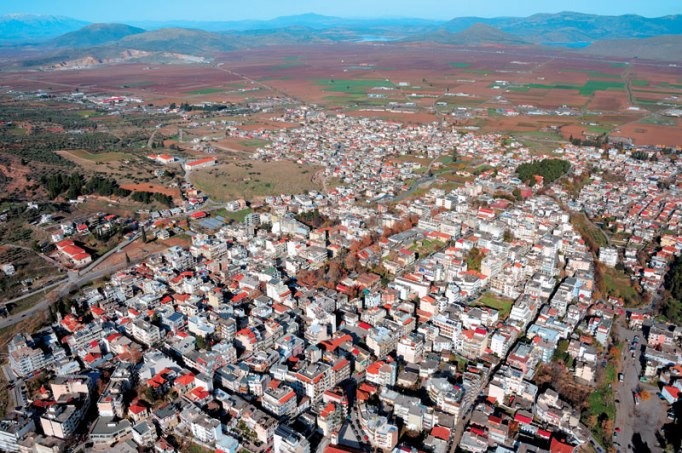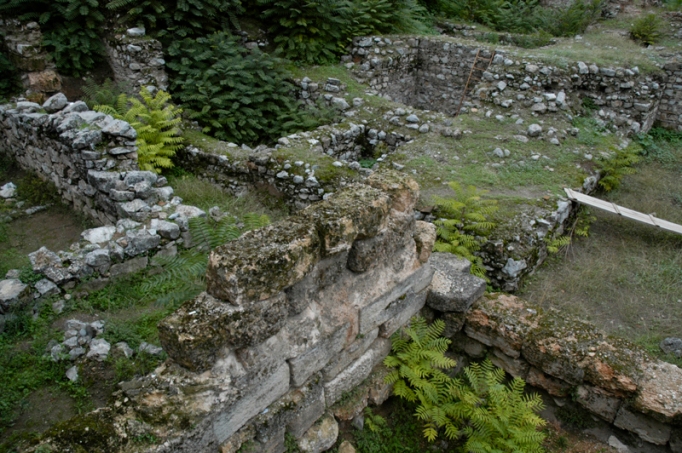Thebes: the places of the myths
From the HERMA student lecture series 2014-15
Thebes is a city where the link between mythology and ancient history is so unbreakable that it is very difficult to distinguish where myth ends and history begins.
Theban myths started to be formed between the end of the 2nd millennium BC and the beginning of the 1st. In ancient times, Thebes was known as the Eptapyli and Eptalofi, which means “that it has seven gates and it is built on seven hills”. Number seven appears often in the history of the city as well as in its myths. Indeed, the most famous myths related with the foundation and the development of Thebes are seven themselves, these being the myths of Cadmus from Tyros, Dionysus, Hercules, Niovi from Frygia, Jason and Medea, Frixos and Ino, Trofonios and his brother Agamides, and the myth of Oedipus.
In Thebes you can find many places connected to mythical events. One of the most intriguing is the spring of Oedipus. According to the myth, as a child Oedipus was abandoned by his father, Laius, to avoid the fulfillment of a prophecy predicting that he would kill his father and marry his mother. When Oedipus grew up he went to Delphi to consult the oracle, but on his way back he met a chariot and after a quarrel he killed the passenger, whom he later found out to be his biological father. Oedipus then went to Thebes, where he eventually defeated the Sphynx, who was guarding the city, and as a reward for this married the widow of Laius and ruled the city. The spring is where the mythical king is said to have washed his hands from the blood of his father when he reached the city.
Another fountain, that of Dirce, is associated with two important personalities of Thebes, the twins Zethus and Amphion, who are the legendary builders of the cyclopean walls. Dirce kept the twins’ mother Antiope in captivity for many years, until they decided to take revenge and tied Dirce to the horns of a bull. The myth says that the bull dropped her lifeless body just by this fountain, which then took her name.
There are many other ancient springs in the city named after mythical characters. The abundance of water has always made the area very fertile, and this is why Thebes has been continually inhabited since its foundation in the end of the 3rd millennium BC, as archaeological excavations testify.
According to the myth, the founder of the city was Cadmus. When his sister Europa was abducted by Zeus, Cadmus asked the Pythia of Delphi where he could find her, but the priestess told him to give up the search for Europa, and instructed him to follow a cow he would find outside and build a city in the place where the cow would stop to rest. After finding the spot, he met a dragon in front of the spring of Mars and killed him. He then buried its venomous teeth and from those teeth “the seven Sown Men’’ were born, who helped Cadmus to build the whole city.
There is actually some truth in this myth. In the middle of the 2nd millennium immigrants came from Phoenicia (coastline of modern Lebanon) bringing with them elements of Creto-mycenaean culture. Cadmus was the head of this expedition and became the first king of Thebes. He re-founded the city and built the Cadmeian Acropolis, an impressive palace with innumerable rooms, archives, workshops, storerooms, and big cemeteries on the surrounding hills, which have been partly revealed by archaeological excavations.
Even though the basic myths are only seven, they inspired 59 ancient tragedies, and some of them are the most renowned plays of the greatest tragic poets ever, such as “Oedipus the Tyrant”, “Oedipus at Colonus” and “Antigone” by Sophocles, “Medea” and “Bacchae” by Euripides, and “Seven against Thebes” by Aeschylus. This is also why following the path of its myths is one of the most fascinating ways to explore Thebes.
References
Katsimpardis, G. (2008) Istoria Epta Mython. Tomos 1. “Kyklia Epi, Omiros, Isiodos, Pindaros kai Irodotos: Oi vasikes piges tou 1ou tomou”. Athens: Ekdotikos Oikos Livani
Katsimpardis, G. (2009) Istoria Epta Mython. Tomos 2. “Aeshylos, Sophoclis, Evripidis: oi vasikes piges tou 20u tomou”. Athens: Ekdotikos Oikos Livani
Papageorgiou, K. (1985) Thivaika: Meleti gia tis vasilogeneies ton Kadmeion. Peristeri Attikis
Tsevas, G. (2006) Istoria ton Thivon kai tis Viotias. Tomos A & B. Ekdoseis Koultoura
History of Thebes (n.d.) : http://www.sikyon.com/Thebes/history_eg.html [Accessed 30 October 2014]
![]() Asimina Limperi has a BA in Social Anthropology and is now a student of the MA in Heritage Management. She is interested in culture and in the preservation and promotion of cultural heritage. She has a special passion for Thebes, her hometown.
Asimina Limperi has a BA in Social Anthropology and is now a student of the MA in Heritage Management. She is interested in culture and in the preservation and promotion of cultural heritage. She has a special passion for Thebes, her hometown.




